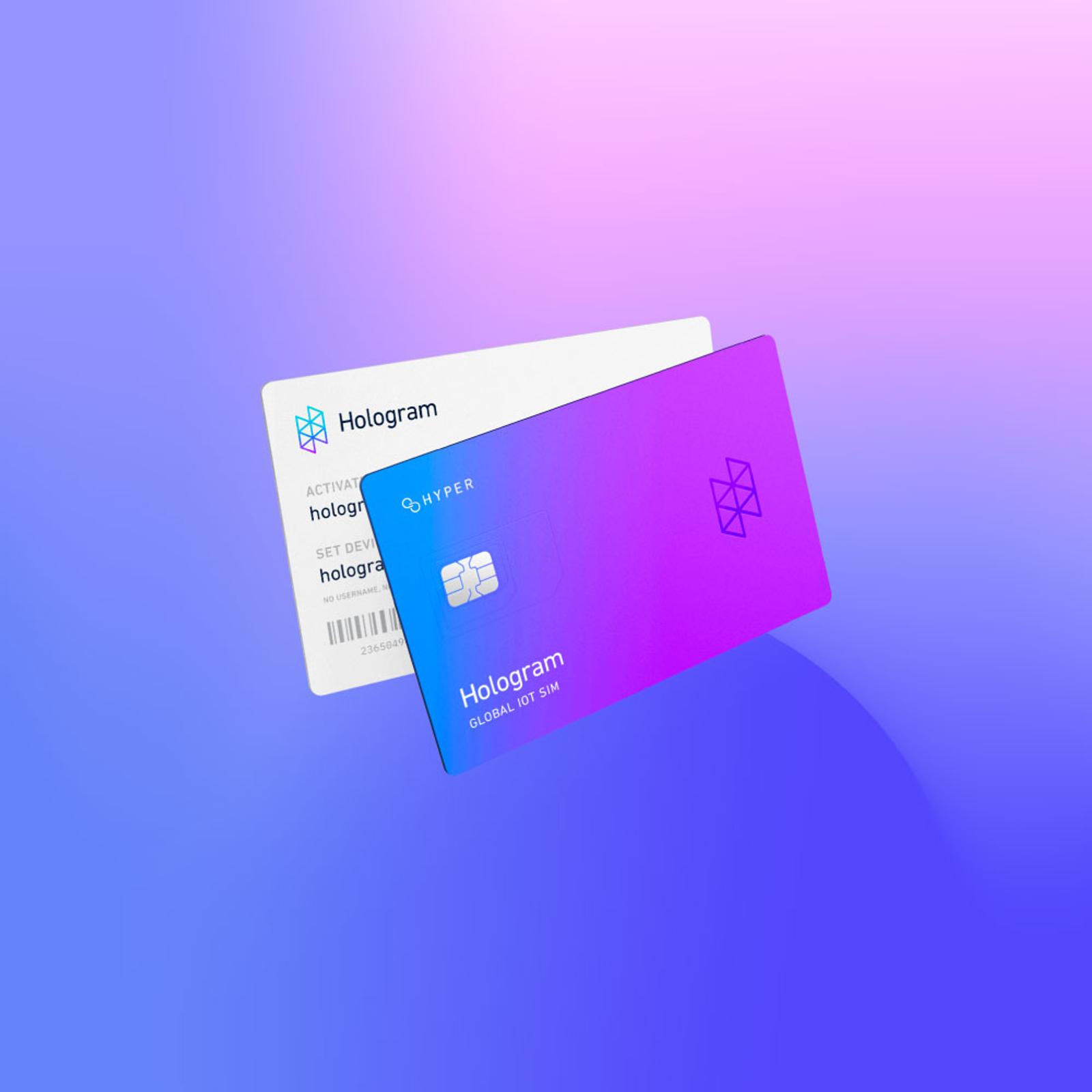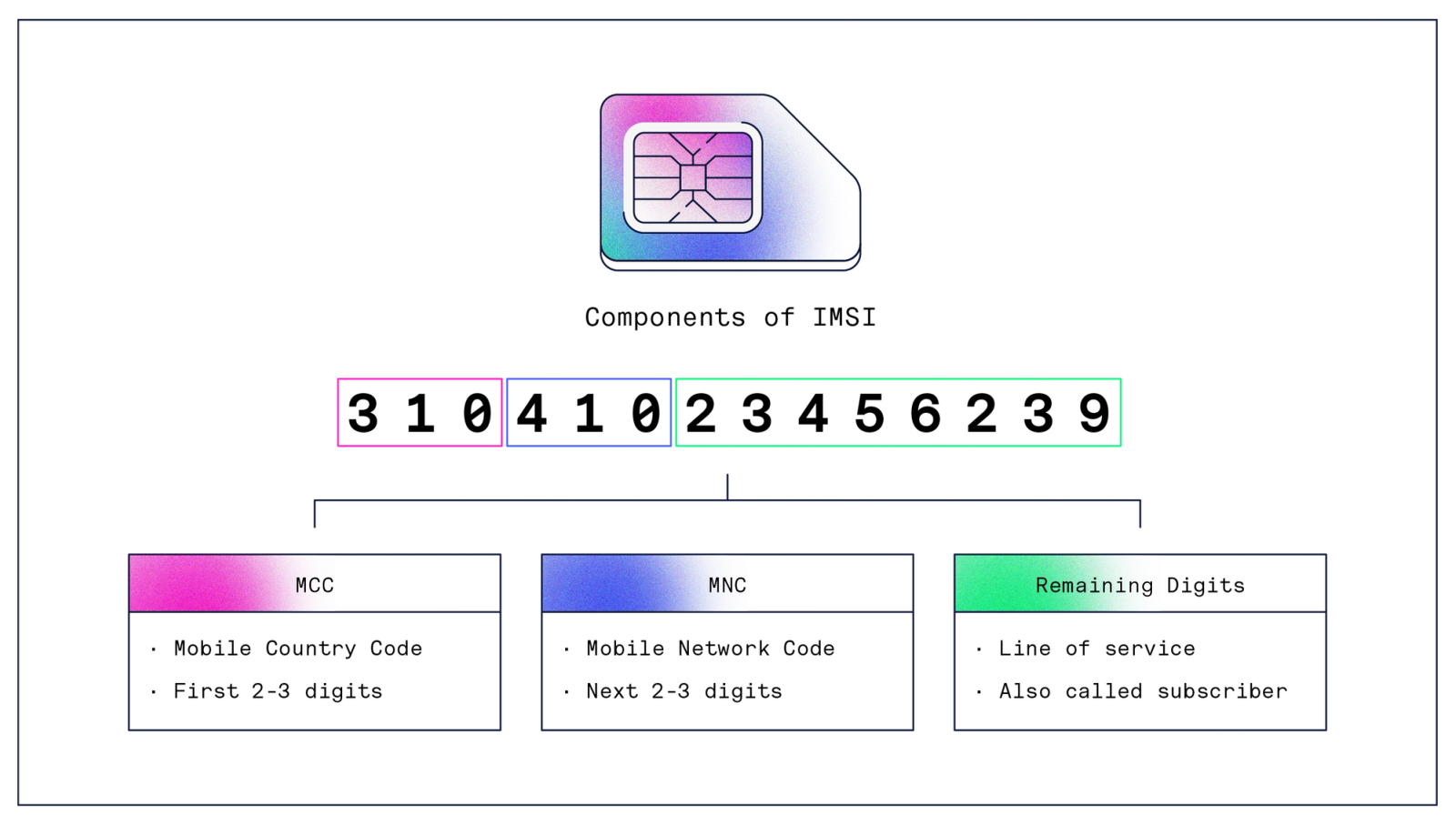Why is an International Mobile Subscriber Identity (IMSI) so important?

IMSI is a unique number for Mobile Network Operators (MNOs). It plays a critical role in cellular IoT.
What is an International Mobile Subscriber Identity (IMSI)?
The International Mobile Subscriber Identity (IMSI) number is used by the cellular network to identify a specific line of service that your data plan is attached to. It’s a vital part of a device’s SIM profile, and if you have a SIM card in the device, the modem module will read the IMSI from it. When the device needs to establish a connection, the network identifies it by the IMSI.
An IMSI is typically 15 digits long. The first three digits are the mobile country code (MCC), and the next 2–3 digits are the mobile network code (MNC). The remaining digits identify the line of service, or what’s termed as the subscriber.

What’s the Difference Between an IMSI and an ICCID?
Because they’re both connected to the SIM profile, the IMSI is often confused with the integrated circuit card identification number (ICCID)—but the two numbers serve different functions. The ICCID is a 19- or 20-digit number, typically printed on the back of a SIM card, which identifies the SIM card itself.
If they’re linked to the same line of service, SIM cards might share the same IMSI, but they will each have their own globally unique ICCID.
Why is the IMSI Important for Cellular IoT?
As a definitive identifier of the line of service, the IMSI is important in device authentication. For example, if an IoT device in the field attempts to connect to a network, the IMSI is part of the identification process granting it access. Each IMSI has a secret key (called a Ki) attached to it, and both the Ki and the IMSI are stored on the network and burned onto the SIM. Together, they create a key-in-lock combination that authenticates the device on a mobile network.
Beyond authentication, the IMSI is also useful for network roaming. Issued by your MNO, the IMSI is linked to your home network and when a device leaves the area—it’s an asset tracker on a cross-country journey, for instance—other networks can identify it by its IMSI and determine agreements and rates for roaming.
With the introduction of the eUICC-enabled eSIM, MNOs need to be able to send IMSIs and Kis over the air (OTA) to the device’s SIM. To protect these essential and distinctive numbers, eSIMs have built-in security features.
Current Challenges with IMSI in IoT
The IMSI and Ki provide an effective authentication solution for consumer devices, which rarely need to use multiple SIM cards or lines of service. In cellular IoT deployments, the needs are a little different. When a micromobility company wants to deploy its connected scooters in Australia and across the U.S., they face connectivity challenges if they install a single IMSI. Because mobile network operators (MNOs) are regional, the devices will only be able to connect in the MNO’s home network region. Outside that area, they will either connect via a roaming agreement or struggle to find coverage. Let’s take a look at a few of the current limitations around single-IMSI SIMs for cellular IoT devices.
Single Network Limitations
Single-IMSI SIMs typically restrict devices to one carrier, making them vulnerable to that carrier’s infrastructure problems and outages. This can cause unnecessary downtime for your IoT devices—and negative impacts on your business. Also, if the carrier chooses to raise their rates, you are locked into paying higher prices for the same services.
Poor Coverage
An IoT SIM with a single IMSI must connect only to the network defined in its mobile country code (MCC) and mobile network code (MNC). If that network is a regional carrier, your device might be fine within the home area, but if it’s attached to a vehicle or shipped to another area, it might struggle to stay connected. It will only be able to connect to carriers on your MNO’s list of roaming partners, which might not always be the best option in a given area.
Solutions for Cellular IoT: Multi-IMSI vs. eUICC
As we’ve seen, single-IMSI SIMs can cause connectivity and coverage problems for cellular IoT deployments, especially those that involve devices in motion such as asset trackers, autonomous vehicle sensors, and wearable health trackers . Even if you’re designing a stationary device like a smart city parking meter, you might want to market the device in more than one city across the country (or around the world)—making it difficult to install a single type of SIM that would work everywhere.
To solve these issues, cellular IoT SIM providers have come up with two popular options: multi-IMSI connectivity and eUICC.
To provide multi-IMSI connectivity), the SIM is loaded with several IMSIs, allowing subscribers to switch carriers when the device moves to a new geographical area. Multi-IMSI technology promises flexibility for global IoT deployments because it allows devices to find and connect to local service providers automatically, without the coverage restrictions of having one particular carrier or the limitations (and added expenses) of roaming.
In most cases, IoT devices using embedded universal integrated circuit card (eUICC)-enabled eSIMs must be provisioned OTA to change profiles and network providers. But some eUICC platforms now allow IoT devices to switch between profiles automatically.
While multi-IMSI is a useful technology with much potential, it has some limitations. A multi-IMSI SIM shuffles between multiple profiles based on available networks—and this switching logic can cause longer registration times and varying service experience.
In contrast, Hologram’s global IoT SIM and eUICC SIM platform (Hyper) give IoT devices the power to switch automatically between carriers without delays, always optimizing the best possible coverage in a given area.